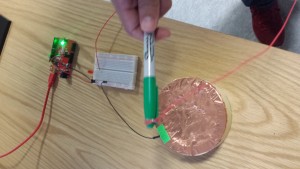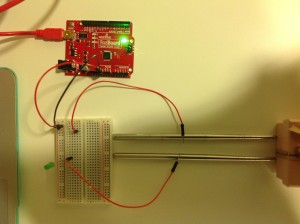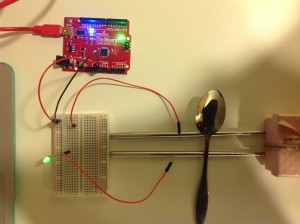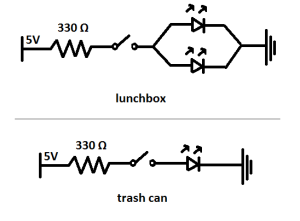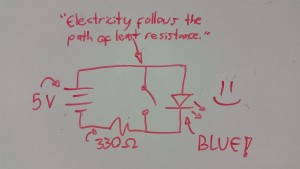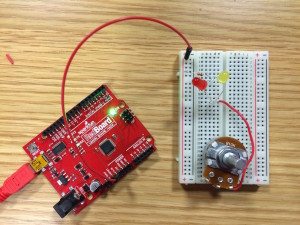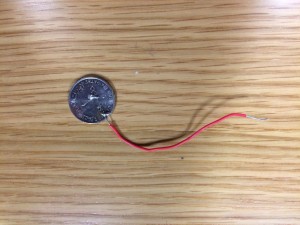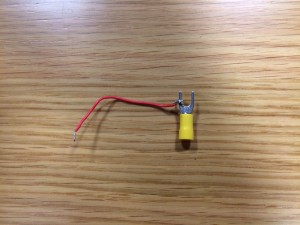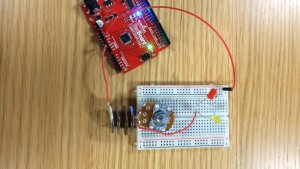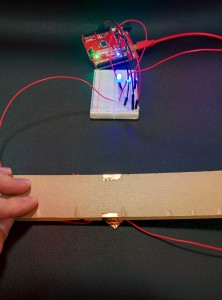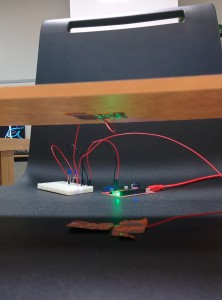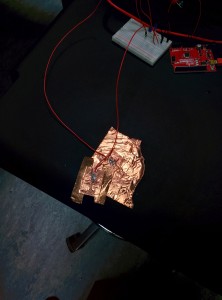Imagine this:
You’re coming home after a long day, and as soon as you enter you place your keys in a bowl by your door. But this is no ordinary bowl. The very second your keys touch the bowl, your lights turn on!
Well I’ve made something like that on a much smaller scale.
I’ve made a bowl that has nearly two conductive halves that, when connected with something that can conduct electricity, closes the circuit and turns on the LED. Kind of looks like this:
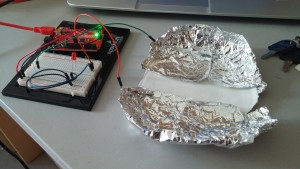
I know, not the fanciest looking bowl out there. But it works! And I can see it being useful to many people.
Here’s a video to prove it:
Update: The blue wire in the video was an extra unnecessary wire between the red wire and the LED. I have since removed it. Please ignore it as the following section does not acknowledge it. Thank you.
The way it works is actually very simple, and I’m sure you all could figure it out. But I’ll explain it anyways.
First things first, you set up the RedBoard and connect the power and ground wires.
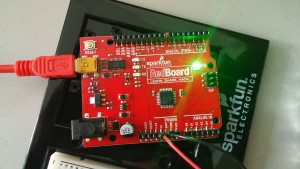
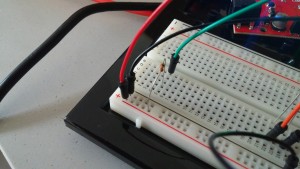
Then I place a resistor there to decrease the Voltage to the green wire which is connected to one half of the plate:
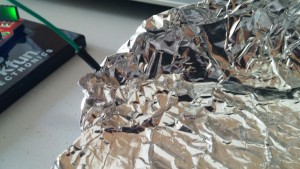 The Aluminum foil was the most versatile conductive material I could find, so it serves my purpose well. I left a gap in between the two aluminum foil halves so we are left with an open circuit that would need the keys (or any other conductive material) to close. The other half has a red wire that connects back to the bread board.
The Aluminum foil was the most versatile conductive material I could find, so it serves my purpose well. I left a gap in between the two aluminum foil halves so we are left with an open circuit that would need the keys (or any other conductive material) to close. The other half has a red wire that connects back to the bread board.

The red wire is hooked up to the same row where the LED is and continues to the black wire that connects to ground, indicating the end of our circuit.
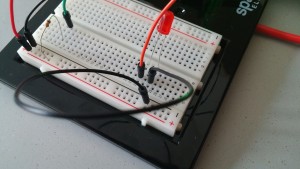
So all we really need for the Greenies to reach the party are the car keys. Give em the car keys and they get ballistic and immediately power up the LED.

